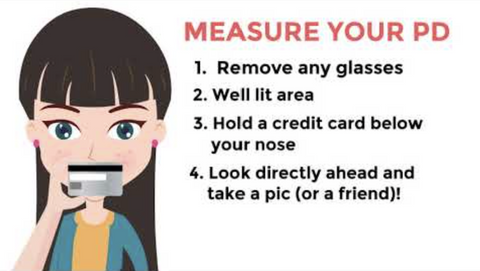How to Buy Reading GlassesAt a certain point, many people, including women, realize that their vision is no longer as sharp as it used to be as they age. You could be looking at a sign on the road and notice that it looks blurry through your reading lenses, or find yourself looking at your phone screen very closely to make out the words on the screen with prescription lenses. Seeking advice for vision correction is a natural next step.These examples, and many more, indicate the development of presbyopia, which is the gradual loss of the eye’s ability to focus on objects. While this condition may sound worrying, you are not alone! There are several simple ways to fix your vision. A common solution is wearing a pair of eyeglasses with the right lenses as part of your daily eyewear. The first step to buying eyeglasses is to visit an optometrist or optician who can guide you and determine which reading power is best for you. Reading power is a number that indicates the amount of magnification present in the lens. A lower number means that there is less magnification, and vice versa. To find this number, you can either consult an eye doctor for a prescription or find your reading magnification by yourself (link to “find reading power” article here) before you shop reading glasses. The second step is to determine which type of reading glasses to purchase. There are several types of reading glasses available, ranging from bifocals to computer readers, trifocals, and progressive lenses. We go into detail about the various types of reading glass lenses in our guide here (link), which can aid you in purchasing reading glasses that suit your needs best. Once you have found your reading magnification and determined which type of lens is best for your needs, you can finally start shopping for your new glasses! You'll need to choose the perfect frame for your face to ensure comfort and style. Considering your face shape and other details, there are many different styles and frames to choose from, so take your time and find the ideal pair of eyeglasses. The most common places to buy reading glasses are either over-the-counter at physical retailers or online, such as visiting a store that specializes in eyewear. At Anytime Glasses, we have a plethora of unique glasses that are sure to fit every person’s stylistic and practical needs. If you are dissatisfied with any aspect of our glasses, we offer a comprehensive return/exchange policy as we understand that buying glasses is harder online. Find Your Reading Power
 Finding which strength reading glasses you need can be confusing without the proper knowledge and guidance. In an effort to make your buying experience as simple as possible, we have compiled a few tips to make it easy to figure out your reading magnification. One of the easiest ways to find your optimal reading power is to use a diopter test chart. Diopter reading test charts have rows of words that vary in text size. You can print a diopter chart below for use at home. Place the printed chart 14 inches away from you and attempt to read the top line without your glasses on. Continue trying to read the lines down the chart until you find a line that you can read without glasses on. The line that corresponds with the diopter, or magnification, listed is the one we recommend purchasing. If you require different magnification powers in your right and left eye, cover one eye at a time to test them individually. How to Measure PD
PD, or Pupillary Distance, is a term that describes the distance between the centers of your pupils. This measurement must be as accurate as possible as it indicates where a person looks through the lens of their glasses, which is known as the optical center. PD is usually measured by an eye doctor during an exam. However, if you are trying to purchase glasses without a prior eye exam, we have outlined some simple steps to help you measure them yourself. 1. Stand 8 inches away from a mirror. 2. Hold a ruler that measures in millimeters against your brow. 3. Close your right eye, then align the ruler’s 0 mm with the center of your left pupil. 4. Look straight, then close your left eye and open your right eye. 5. The mm line that lines up to the center of your right pupil is your PD. It is recommended that you undergo these steps at least 3-4 times to ensure accuracy and consistency. For reference, the average range of an adult’s PD is 54-74 millimeters, while the average range of a child’s PD is 43-58 millimeters.
Click to view affordable reading glasses |
15% Off New Customer! Code: AG15 Minimum $50+
Gesamt: $0.00
Steuern und Versandkosten werden beim Checkout berechnet

